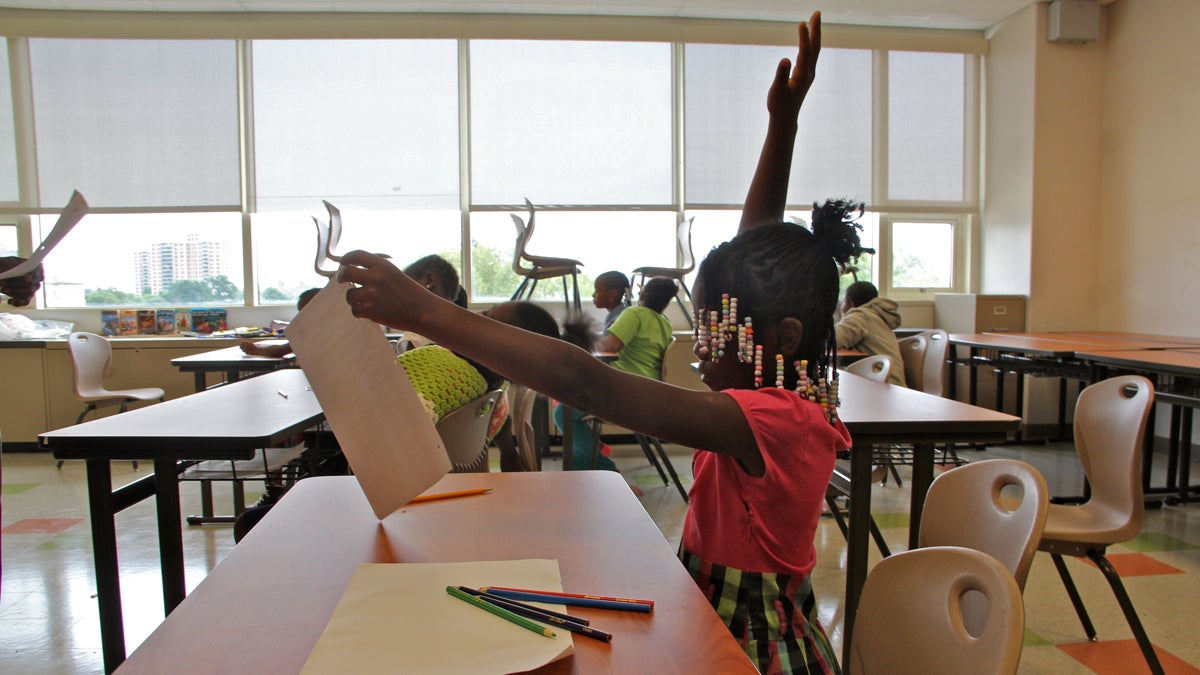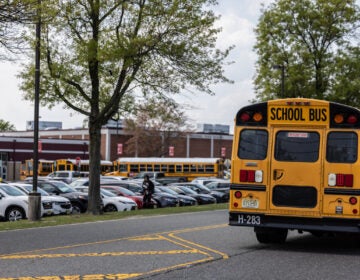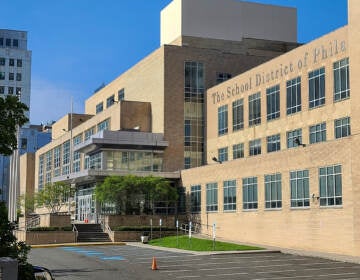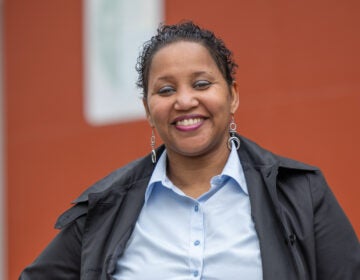One year after substitute teacher crisis, Philly schools see improvement with new contractor

Philadelphia schools are doing a better job finding substitute teachers this year. (Emma Lee/WHYY
The distict’s substitute teacher fill rates are way up from last year, but only a smidge higher than they were before Philly outsourced the service to a private vendor.
So far this school year, Building 21, an experimental high school in North Philadelphia, has requested substitute teachers to cover three school days.
Much to the school’s delight, substitute teachers have showed up all three times.
“We have been thrilled to get subs every time we’ve had a teacher call out,” said Principal Laura Shubilla.
During the first two-and-a-half months of the prior school year, Building 21 received a sub just six percent of the time it requested one. In fact, so far this school year Building 21 has covered more absent teacher days (3) than it did in the entire run up to winter break last year (2).The school’s struggles were part of a district-wide substitute teacher crisis that drew headlines and criticism.
One year later, Philadelphia schools appear to be in much better shape.
In weeks one and two of the new school year, the district reported substitute teacher fill-rates of 63 and 68 percent respectively. That means a substitute teacher was provided roughly 7 out of 10 times a Philadelphia school requested one.
Those are relatively poor numbers compared to surrounding suburban school districts, but they represent a massive improvement for Philadelphia. Last year the district outsourced substitute hiring to a private vendor, Source4Teachers. The partnership flopped almost immediately. Last September, the district’s fill rate was an abysmal 17 percent. Though the numbers improved later in the year, at no point did the rate climb above 49 percent.
“We acknowledge that we had to do a better job from last year and that’s why we decided to change firms,” said district spokesman Kevin Geary. “We’ve gotten a lot of positive feedback from pricipals so far.”
Changing course
The district axed Source4Teachers earlier this year and hired another outsider vendor to replace it, Kelly Services. In May, the district’s School Reform Commission approved a contract with Kelly that could be worth up to $42 million over the next two years depending on performance and demand.
So far it appears Kelly–a public traded company that performs temporary staffing across a number of occupations–has avoided the pitfalls that plagued its predecessor. As of late last week, Kelly had hired and cleared 605 substitute teachers, according to the district. Another 201 teachers are hired pending the completion of necessary paperwork or background checks. Kelly tells the district it has another 1100 teachers “in the pipeline,” meaning they are somewhere along the path to becoming eligible subs.
Despite those promising signs, Kelly’s early fill-rate isn’t much better than the standard set in the years before Philadelphia contracted out its substitute services. In 2014-15–the last year the district used an in-house process for supplying substitutes–schools received teachers 64 percent of the time when a regular staffer was absent. That’s a tad better than the rate registered the first week of the school year, and a tad worse than the second-week rate.
Plenty of room for improvement
Still, Philadelphia continues to lag behind its suburban counterparts when it comes to plugging teacher absences. A recent survey of 21 suburban school districts by WHYY reporter Laura Benshoff found that all 21 had fill rates above 69 percent. Two thirds of the districts reported fill rates of 80 percent or above.
In its contract with the district, Kelly vowed to have 1,800 substitute teachers hired by September 1st and said a district of Philadelphia’s size should ideally have between 2500 and 4000 qualified teachers at the ready. In other large urban areas such as Kansas City, Tampa, and Jacksonville, Kelly has managed to post fill rates of 92 percent or higher. Clearly, its early work in Philadelphia has lagged behind.
Kelly also irked a handful of teacher early in the school year when it underpaid some veteran subs. Substitutes who are former school district teachers are supposed to receive a higher daily rate than those with no history in the district. Some former district teachers were initially mislabeled and paid at a lower-than-expected rate. The district says the problem affected less than 10 teachers and was quickly remedied, with underpaid teachers receiving backpay.
Kelly’s early recruiting success is perhaps partly due to the fact that it pays substitute teachers more than Souce4Teachers did. In fact the pay compares favorably to what substitutes received before the district hired an outside vendor.
Before the district hired Source4Teachers, substitute teachers were part of the local teachers union and they were paid according to salary scales laid out in the Philadelphia Federation of Teachers’ contract with the district. When they were PFT members, substitute teachers made between $126.76 and $242.83 daily based on their prior experience and credentials. Kelly pays similar rates, with teachers receiving between $126.76 and $229.92. Kelly also receives a markup of between 37 and 39 percent for every teacher placed.
Union unimpressed, calls for changes
The decision to outsource substitute services enflamed tensions between the PFT and the district, and became a flashpoint in the long debate over school reform and privatization. It remains disputed territory.
The PFT filed a class-action grievance against the school district after it first decided to scrap the internal hiring process and use a private vendor. The issue is currently before an arbitrator, who will decide if the district violated the PFT contract and determine any financial awards.
Not surprisingly, union president Jerry Jordan was unimpressed by Kelly’s early fill rates.
“I don’t think it’s anything to celebrate,” Jordan said.
He said if outside vendors can’t improve upon the old fill rates, the district should revive the internal hiring process.
“Why change if your fill rate is going to be the same,” Jordan said.
District brass believes the fill rate will improve as Kelly digs in, and that the company brings expertise a school district simply can’t replicate.
“Substitute recruiting requires specific, high volume recruting tactics and techniques that the district really did not possess,” said district spokesman Geary.
Of course it remains to be seen whether Kelly’s fill rates will improve, plateau or decline throughout the rest of the year.
For principals like Laura Shubilla, though, the early returns are encouraging. Kelly, she said, has been professional and prompt. Just as important, she’s glad to be clear of last year’s mess.
“When teachers are absent and we don’t get a sub it makes for a very long day for teachers because they lose their prep periods,” said Shubilla. “It’s not great for staff morale and it’s also not great for student learning.”
She said staff did take note when Kelly was able to cover the first three teacher absences of the year.
The teachers at Kensington Health Science Academy, a high school in the Kensington section of Philadelphia, are singing a similar tune. After enduring a 30 percent fill-rate during the first months of last school year, the school has received a substitute both times it has asked for one this year.
“That’s pretty good,” said guidance counselor Bob Nelson with a chuckle. “It looks at this point like it’s an improvement over last year, but it’s really too soon to tell.”
WHYY is your source for fact-based, in-depth journalism and information. As a nonprofit organization, we rely on financial support from readers like you. Please give today.





